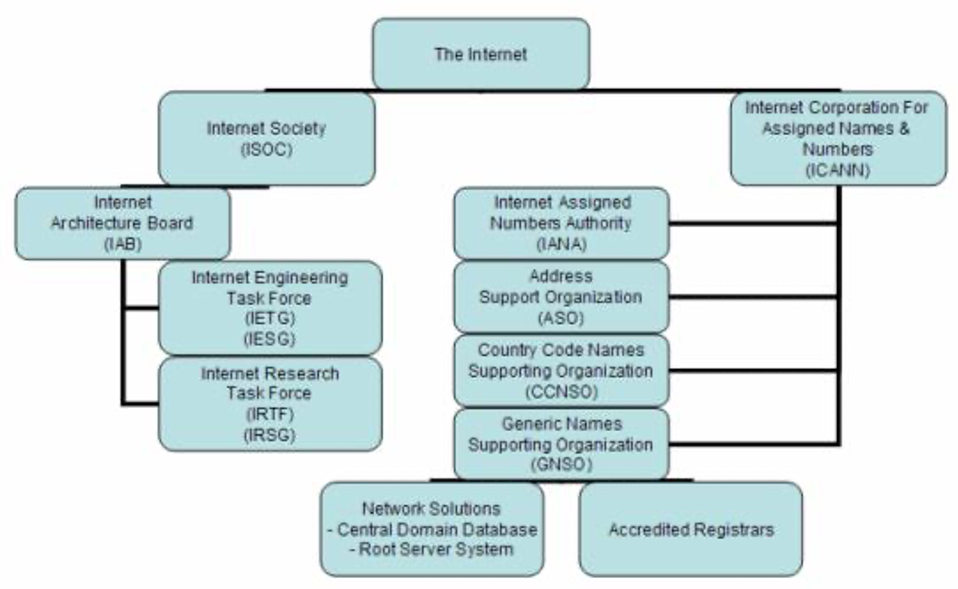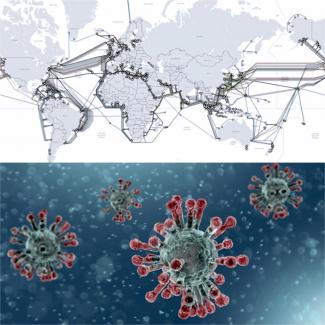Could COVID- 19 Pandemic Lead to Long Term Disruption in Internet Services?
The Internet has become a lifeline for the world for the past few decades. At present, owing to the Covid-19 threat, the world is observing ‘social distancing’. However, at the same time, there has been a major increase in ‘digital closeness’. For all these years, the idea of ‘work from home’ had very limited relevance, but now all of a sudden, this is becoming a global reality. Unfortunately, this is also leading to the overcrowding of digital networks due to rapid traffic growth. Obviously, there is an increasing fear that possibly the Internet may not be able to handle this additional strain. In some places, people are facing frequent Internet breakdowns and mostly decrease in its speed. However, all this could be viewed more as tactical challenges. But it is also important to check if the ‘arrangement of Internet’ itself could survive the biggest threat ever posed to the entire humanity by the coronavirus.
It is expected that by April 2020, the Covid-19 infection could spread more, both in the terms of geographical expanse and the number of infected individuals. At the same time, dependence and use of the Internet are also going to increase. Apart from the use for medical purposes, the use of the Internet for educational, entertainment and business purposes is going to increase. However, there could be some reduction in usage with specific industrial sectors like travel and hospitality industry. All this would obviously depend on the actual growth (reduction) of the Covid-19 threat. Overall, there would be much growth in respect of usages of Internet-based applications and e-commerce, e-governance, e-learning, messaging and videoconferencing tools. All this would definitely impact the performance of broadband networks. More than a fixed broadband network, the traffic could be more on cellular networks. Broadly, it is expected that the entire system may not crash, but witness some diminution in performance.
The purpose over here is not to paint a dooms-day scenario. However, some realistic assessment does indicate that the situation could remain in a state of flux for at least coming three to four months. All this would have a significant impact on the global economy. Coronavirus has no racial, regional, political or financial-status based preferences. Hence, it is very difficult to predict the pattern of deaths in the coming few months at the global level except that the younger generation has a high probability for survival. It is important to note that the Internet and provision of Internet services is a business and like any other business it runs on money and trained manpower. Both could be in extremely short supply if the Covid-19 situation deteriorates further. Apart from medicine and food, the Internet will be the only other ‘business’ that would remain in demand as the world increasingly gets engulfed under the coronavirus cover. Hence, it is important to understand the possible impact on the existing Internet Ecosystem and analyse what may happen to this Ecosystem if the Covid-19 threat picks up in a big way globally.
Today, interests of almost 60% of the global population could be at stake if the global Internet architecture gets disturbed. The following table provides information about the increase in the global reach of the Internet in recent past:
|
Date |
Number of Users |
% World Population |
|
June 2017 |
3,885 million |
51.7% |
|
Dec 2017 |
4,156 million |
54.4% |
|
Jun 2018 |
4,208 million |
55.1% |
|
Dec 2018 |
4,313 million |
55.6% |
|
Mar 2019 |
4,383 million |
56.8% |
|
Jun 2019 |
4,536 million |
58.8% |
|
Jan 2020 |
4,574 million |
58.7% |
The Internet is not a monolith but could be viewed as a group of different agencies. At present, there are some recognized organizations that work together to manage the Internet. They are also responsible for research and development and also look after the legal issues. The diagram below provides a broad idea about the agencies managing the Internet.

[Source: “Internet Management”, https://www.livinginternet.com/i/iw_mgmt.htm]
Some of the organisations in the above chart are umbrella organisations having many subunits and thousands of people working in various parts of the word. Presently, various institutes perform different tasks to make the Internet a reality. These tasks include security, data collection, multilateral collaborations, data management, software generation, standardization and handling of finances.
It is important to note that the Internet is not a fully autonomous system. Also, it is not a centrally managed system. It has a number of stakeholders and displays a good amount of honesty in the operations. It is a dynamic system consisting mainly of huge Data Centres. These are called the brains of the Internet. The present-day Data Centres are basically industry type facilities and houses many thousands of interconnected computers, servers, and other related technical systems. A single centre is known to consume electricity equivalent to the electricity required for the sustenance of a small town.
The heart of the Internet system is data. There is a general belief that the data is placed in a Cloud. However, in reality, the data exists in an Ocean. It is the underwater cables that are the invisible force driving the modern-day Internet. It is a network of around 380 underwater cables in operation around the world, spanning a length of over 1.2 million km. At present, this entire architecture is funded by Internet giants such as Facebook, Google, Microsoft, and Amazon. Cable failures happen each year and they happen both owing to human mistakes like ship movements or because of natural disasters like hurricanes or underwater earthquakes.
The process of cable laying and routing is a very complicated and tedious process and requires a significant amount of planning. Each cable is expected to last up to 25 years, but owing to increasing load and technology updating, there is a constant demand for upgrading existing routes and adding new routes. There is a 456-foot ship named Durable that delivers the cable to sea. This ship is mostly in action and carries around 80 crew members. But at present, even ships are facing the threat from coronavirus. Around 21 cruise ships around the world are known to have been affected by the coronavirus. So naturally, even cable laying needs to be undertaken with caution in the Covid-19 era.
Internet is a complex system involving many subunits. There is no simple button that can switch off the net suddenly. Under the present circumstances with the Covid-19 ‘cloud’ becoming denser every day, the use of the Internet is going to increase significantly. This increased usage could impact the speed of streaming and downloading. There could be delays, lags, and congestion which could eventually disrupt the networking services.
However, major challenges could be faced if the world finds it difficult to control the spread of the virus or after some lull the threat remerges. It may take another three to four months’ time to understand where the world is truly headed in terms of economy and public health. Hence, it could be difficult to predict the ‘face’ of the world say after six months. At present, the Internet system appears to be resilient and unlikely to crash suddenly. As long as there are no major disturbances, the Internet would perform normally, but possibly after few months, there could be some degradation in services.
Internet is about the information that gets fed to various platforms. There are some technical processes involved to process the information for it to reach the users in a users’ friendly format. However, there exists a possibility that the information flow itself could get arrested owing to the ongoing situation. A significant amount of human intervention takes place in generating information when articles and blogs are written, photographs are taken, videos are made, newspapers are published, analysis and reports are inscribed. If this data streaming happens intermittently, then even if the Internet as a system remains functional, it may not be able to provide the current, correct and timely information.
There are a few soft spots in the overall Internet ecosystem. Any problem in even one soft spot may lead to at least partial disruption in services. Data Centres have a dependence on electricity. Any failure in providing this essential power source could impact Internet performance. The worst-case scenario could be if any disturbance happens with the underwater cables network. At present, there is a possibility of rerouting traffic since there are different cable networks. However, in case of extreme Covid-19 emergency, if the global industry starts facing major challenges, then it would definitely have an impact on Internet services too. There may not be a total death or a long term disruption of the Internet, but it is prudent to remain prepared to reduce our overdependence on the Internet.
References
1.“Internet Growth Statistics: Today's road to e-Commerce and Global Trade Internet Technology Reports”, Accessed on March 22, 2010.
2. “The global internet is powered by vast undersea cables. But they're vulnerable”, CNN, July 26, 2019. Accessible at https://edition.cnn.com/2019/07/25/asia/internet-undersea-cables-intl-hnk/index.html.
3.“People think that data is in the cloud, but it’s not. It’s in the ocean”, New York Times, October 3, 2019. Accessible at https://www.nytimes.com/interactive/2019/03/10/technology/internet-cables-oceans.html.
